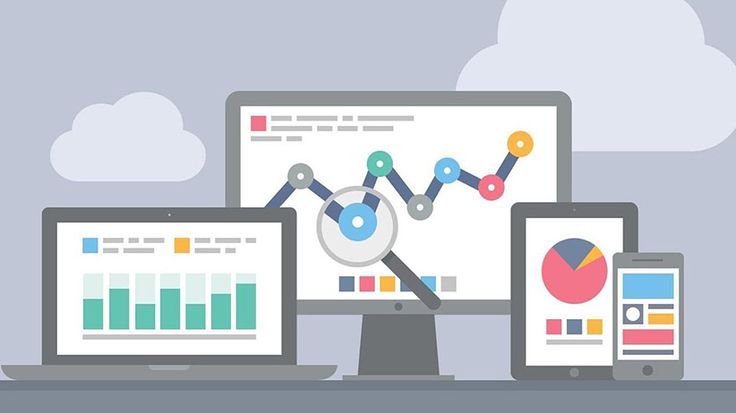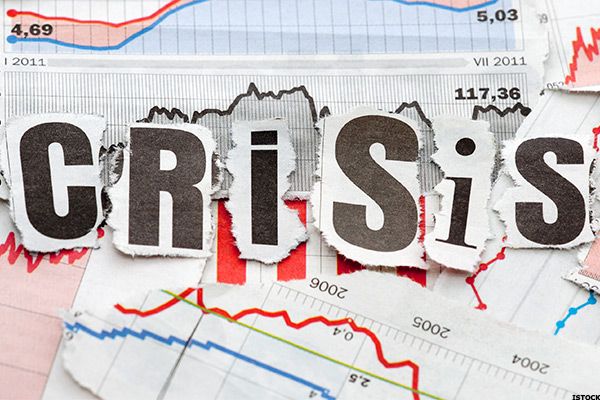UAE Web Development Trends: Merging Tech with Elegance

Strong 8k brings an ultra-HD IPTV experience to your living room and your pocket.
In the UAE, a beautiful tension is at play: a desire for luxury and visual flair, paired with an appetite for cutting-edge technology. Whether you're an up-and-coming e-commerce brand or a legacy corporation seeking to refresh your site, staying ahead in Dubai—or Abu Dhabi—means understanding how web development has evolved in this unique digital ecosystem.
These aren’t just trends—they’re the building blocks for sites that function as both a statement of brand identity and a performance engine, all while respecting local culture.
1. Mobile-First & Responsive Design: Designing for On-the-Go UAE
With over 98% smartphone penetration in the UAE, designers and developers lead with mobile. It's a mobile-first world, and websites must follow suit.
Key strategies:
• Thumb-friendly layouts: No tiny buttons—touch targets should be at least 44x44px.
• Progressive enhancement: Start with the simplest mobile view, then layer experiences for larger screens.
• Performance-first mindset: Smaller assets, smarter CSS, faster load times.
In short: If your site isn’t elegant on mobile, you're failing before the page loads.
2. Immersive AR/VR: “Try Before You Buy” in a Virtual Oasis
IKEA UAE’s AR showroom isn’t a gimmick—it’s a game-changer. With 3D models rendered in real-time, customers visualize how furniture fits their space before buying.
What’s gaining traction:
• AR “place-it” features in home décor, fashion, and automotive.
• VR walkthroughs for real estate—from penthouses to villas.
• 360° storytelling, like virtual tours of day spas or cultural landmarks.
These experiences build trust and reduce returns, while keeping brands firmly in the luxe lane.
3. AI-Powered Personalisation: Tailored Journeys at Scale
Thanks to tools like ChatGPT and TensorFlow, websites today can learn what users like and adjust in real time.
Personalisation tools in action:
• Dynamic banners that change by gender, interest, or location (e.g., “Discover Ramadan offers for you”).
• Smart recommendations: After purchasing a DSLR, you get emails suggesting lenses and memory cards.
• Conversational chatbots: Offering instant, localised help in English and Arabic, with human escalation if needed.
Results? Engagement improves by up to 80%, and customers feel seen.
4. Voice Search Optimisation: Speak, Don’t Type
Voice assistant usage is rising fast in UAE homes and vehicles. “Hey Siri, find the nearest vegan restaurant in JLT.”
To optimise:
• Use natural questions in headings—e.g., “Where to find vegan shawarma near me?”
• FAQ pages serve double duty: SEO and voice-readiness.
• Ensure fast page speed and structured data, so voice engines prefer your site.
Speaking to customers isn’t just literal—it’s strategic.
5. Accessibility & Inclusive Design: Crafting for Everyone
In a multilingual, inclusive society, websites must be:
• Screen-reader compatible (alt text, ARIA roles)
• Keyboard navigable for people with motor impairments
• Colour-contrast appropriate for visually impaired users
Inclusivity is both ethical and practical—your site is usable by everyone.
6. Localisation: Designing for Emirati and Expat Audiences
A site for the UAE should speak in more than English. Localisation strategies include:
• RTL layouts with Arabic fonts like Noto Kufi
• Culturally resonant visuals, Ramadan orisements, or UAE Flag Day themes
• Localised UX copy, like “Book iftar table” instead of “Reserve now”
It’s not translation—it’s cultural immersion.
7. Data Privacy & Ethical UX: Respect Builds Trust
With global data concerns, UAE brands lead with transparency:
• Cookie banners with clear consent options
• Privacy-first architecture (minimal data collection by default)
• Readable terms that respect user autonomy
It’s not just compliance—it’s brand integrity.
8. High-Quality Visuals & Minimalist Luxury: Aesthetic Meets Function
UAE users expect elegance. Think minimalist interfaces with bold visuals:
• Clean whitespace-rich layouts
• Retina-ready imagery—high DPI visuals without lag
• Carefully chosen typography—sans-serif, elegant, readable
Luxurious aesthetics build aspirational appeal.
9. Interactive Elements & Storytelling: Forge Emotional Bonds
Static pages are out. Interactive narratives are in:
• Scroll-triggered animations, like gallery fades or product reveals
• Storytelling microsites—like Dubai Expo retrospectives
• Interactive infographics for data-driven brands (e.g., solar savings over time)
Memories are made through interaction.
10. Sustainable Design: Eco-Aware Digital Footprints
Green values are rising—UAE consumers appreciate brands that match their ethics:
• Optimised code cuts server load & energy usage
• Green hosting powered by renewables
• Lightweight designs (SVGs instead of PNGs, compressed JS)
Digital sustainability isn’t eco-fluff—it’s brand authenticity.
Real-World Snapshot: Five UAE Brands Leading the Charge
1. Luxury real estate portal offers VR walkthroughs of penthouses in Palm Jumeirah (Trend 2 + 6)
2. Eco-friendly skincare brand uses AI recommendations and ethical UX (Trend 3 + 7)
3. High-fashion online boutique integrates voice search for Arabic queries (Trend 4 + 8)
4. Automotive marketplace offers AR car color previews and interactive storytelling (Trend 2 + 9)
5. Lifestyle blog uses high-res minimalist aesthetics and mobile-first layouts (Trend 1 + 8)
SEO Integration & Marketing Strategy
Your site is part of a bigger ecosystem. For example:
• Minimalist design + schema markup helps pages rank for voice search
• Interactive microsites become shareable assets in campaigns
• AI-personalisation aligns seamlessly with email funnels crafted by a digital marketing company in Dubai
Seeing the synergies amplifies your ROI and your brand’s reach.
Making the Right Strategic Moves: How to Implement These Trends Seamlessly
Now that we’ve outlined the trends shaping web development in the UAE, it’s time to talk implementation. Because knowing what’s hot is only half the game—executing it in a way that aligns with your brand’s identity, technical resources, and customer expectations is where real impact is made.
1. Start with a Website Audit
Before diving into redesigns or new tech integrations, conduct a thorough audit:
• Is your current site mobile-first?
• Are pages loading in under 3 seconds?
• Are accessibility and localisation built-in, or are they afterthoughts?
Tools like Google PageSpeed Insights, Semrush, and Lighthouse can give you actionable data to guide your upgrade strategy.
2. Prioritise Features Based on Business Type
• Retailers & E-Commerce: Lean into AR/VR, AI-driven product recommendations, and seamless mobile UX.
• Service-Based Firms: Focus on interactive storytelling, high-quality imagery, and ethical UX practices.
• Real Estate or Luxury Brands: Invest in immersive virtual experiences, minimalist design, and personalized browsing.
If your business targets a luxury or aspirational audience (as many in the UAE do), remember: Less is more. Every design element should feel intentional and refined.
Partnering Smart: Finding the Right Development Team
Web development isn’t a solo act. You need designers, developers, copywriters, UX strategists, and sometimes, AR/VR specialists. That’s why selecting a partner agency that understands both the regional context and global design standards is critical.
Look for agencies that:
• Have a strong portfolio of mobile-first, visually engaging sites
• Demonstrate understanding of UAE-specific localisation needs
• Can integrate SEO, voice optimisation, and personalisation features without overcomplicating the UX
Several businesses in the Emirates, especially those looking for seamless integration of web platforms with their broader marketing campaigns, often turn to partners that specialise in both development and marketing. You might consider aligning with a digital marketing company in Dubai that delivers both tech and storytelling with equal finesse.
Don’t Forget the Marketing Funnel
A beautifully built website without a traffic plan is like a luxury car with no engine. Consider how your web development ties into broader digital strategy:
• Where are users coming from? (Search, social, direct?)
• What happens after their first visit? Is there retargeting in place?
• Are landing pages optimised for conversion, not just design?
Here’s where working with someone experienced in digital marketing services in the UAE adds tremendous value. From SEO to content marketing to paid ads, they ensure your investment in a cutting-edge website doesn’t just sit pretty, but actually performs.
Cost Considerations: Custom vs Template in the Context of UAE’s Market
Let’s address the elephant in the room—the budget. Not every company is ready to dive into high-end custom development. That’s okay.
Template-Based Websites in the UAE:
• Great for startups, solopreneurs, or short-term projects
• Speed of launch is unmatched—sometimes live in days
• If paired with strong branding and UX writing, they can still look premium
Custom-Built Websites:
• Ideal for brands with long-term vision
• Built to scale: Your roadmap can include new features, integrations, and even AI tools
• They allow precise tailoring to the cultural, linguistic, and aesthetic nuances that UAE audiences respond to
Remember: It’s not just what you spend, but how strategically you spend it. For many local firms, an efficient route is to launch with a clean, well-designed template site and slowly build in custom modules, supported by affordable digital marketing services in Dubai for consistent growth.
Sustainability in Design Isn’t Optional Anymore
Digital sustainability is often overlooked, especially in luxury-focused markets. But the tide is changing. Forward-thinking consumers—and investors—are placing value on eco-consciousness.
To lead with green digital values:
• Compress images and minify code for a lighter load
• Choose green hosting platforms with carbon offsetting
• Avoid autoplay videos and unnecessary plugins that drain user resources
Even small steps signal a brand that cares beyond the screen.
Human Connection in a Digital-First Market
One of the most surprising web trends in the UAE today? The return to emotional storytelling. Despite all the tech, users still crave human stories, social proof, testimonials, and content that resonates on a cultural level.
Example: A Dubai-based wellness brand boosted its session time by 3.2x after embedding mini video interviews of Emirati clients sharing their fitness journey. The site didn’t just showcase a service—it told a story.
So yes, integrate AI, optimise for voice search, and push beautiful design. But don’t forget the most timeless tool of all—authenticity.
The Road Ahead: What’s Next in UAE Web Development?
Looking forward, we’re seeing whispers of:
• Zero UI: Gesture and voice interfaces that go beyond screens
• Decentralised identity systems to give users more control
• Web3 integrations for NFT-based membership and loyalty programs
While these may sound far-off, the UAE’s record of fast adoption means they could be mainstream sooner than expected. If you’re building a site now, ensure it’s future-ready, not just present-pretty.
Final Thoughts: Your Website as a Living, Breathing Asset
Too many businesses in the UAE treat web development as a one-off task. But in truth, a great website is like a garden—it needs to be nurtured, evolved, and optimised constantly.
• Regular A/B testing
• Ongoing performance optimisation
• Frequent UX reviews
• Content refresh cycles
The most successful brands don’t just build websites—they grow them. With the right foundation, the right visual language, and the right digital partner (like a top-rated best digital marketing company in Dubai), your site won’t just impress—it’ll convert, engage, and retain.
In a market as competitive and vibrant as the UAE, that's not a luxury—it's a necessity.
Note: IndiBlogHub features both user-submitted and editorial content. We do not verify third-party contributions. Read our Disclaimer and Privacy Policyfor details.







